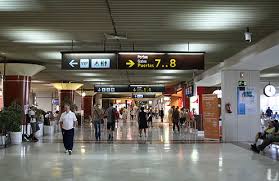 It is estimated that twenty million Americans are plagued with the fear of flying. And if you are one who suffers from a flying phobia then you have lots of company. The term for this challenge is aviophobia and it is not as easy to treat as some other phobias.
It is estimated that twenty million Americans are plagued with the fear of flying. And if you are one who suffers from a flying phobia then you have lots of company. The term for this challenge is aviophobia and it is not as easy to treat as some other phobias.
This flying phobia encompasses many facets of flying.
1. Turbulence
2. Takeoffs
3. Flying over water
4. Landings
5. Feeling of being trapped
6. Weather
7. Crashing
8. Trusting pilot’s ability
9. The possibility of being out of control
10. Questioning the integrity of the plane
11. Possibility of panic attacks
Crashing is only one of the fears faced by an individual who suffers with the fear of flying.
Avoiding travelling by flying only adds fuel to the flying phobia of an individual and the phobia becomes worse. The imagination of some suffers works overtime presenting different possible disasters, plane bottom disappearing, terrorist, screaming, crying and the individual is unable to control his or her imaginings.
Flying is generally considered one of the safest forms of transportation. Even driving a car is more dangerous. Flying is about twenty nine percent safer than driving. However, this will not help when a person has a flying phobia. No matter what the statistics it will make no difference to an individual with a fear of flying.
There are several options open to you, if you suffer from the fear of flying. The one choice is … don’t.
Or you can suffer the embarrassment your fear causes you and the discomfort your fear causes family as well. There is always the option of oblivion caused by the consumption of alcohol (not a good idea). A sedative may work, but also not a good idea. And of course with either of these options you will not be able to drive when you reach your destination. I do not recommend either alcohol or medication. Should both be consumed and an interaction occurs, flying in high altitudes is not the place to have this reaction.
There are avenues of help with a flying phobia. There are clinics that use virtual reality to help an individual deal with their fear of flying. However, clinics offering this type of help may not be available in your area. But it won’t hurt to enquire.
Consulting a qualified therapist for individual treatment and in this case the flying phobia would be a consideration. But your therapist should know something about aviation. Of course, the best of both worlds would is a psychologist familiar with aviation and can offer you treatment for your fear of flying. A program that includes individual assessment.
There are group programs available to help you deal with your flying phobia. These may, at times, be offered by the individual airlines. Passengers who become anxious may just need reassurance and the information provided by these programs. And these groups are usually run by the employees of these airlines. Not by psychologist with the experience to evaluate your specific needs.
Another option is to search the internet for a well structured program designed by psychologists with aviation experience.
————————
There are many time consuming resources to research on the internet, allow me to indicate something that has helped many hundreds to cure their fear of flying in as little as 18 minutes – View http://www.flyingphobia.biz NOW





